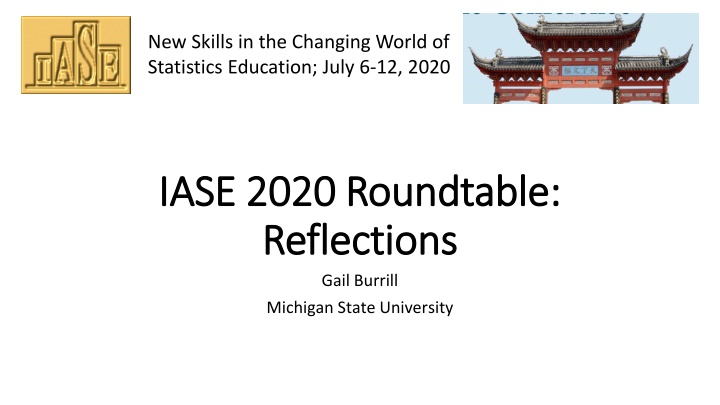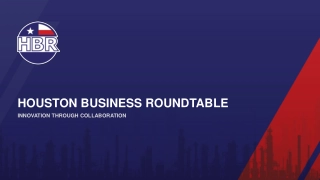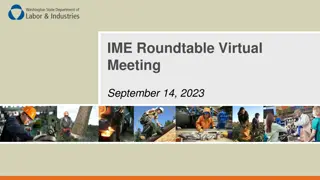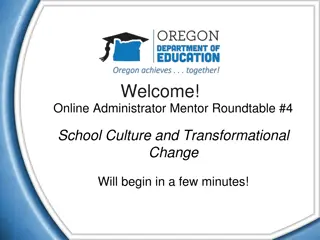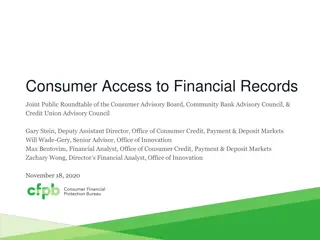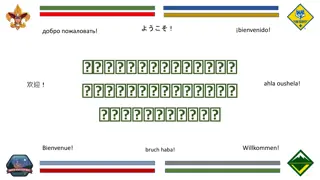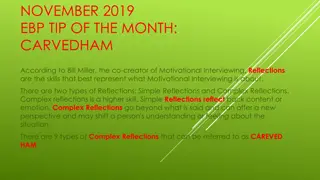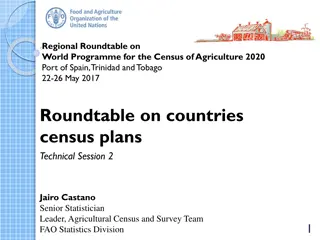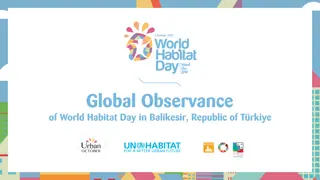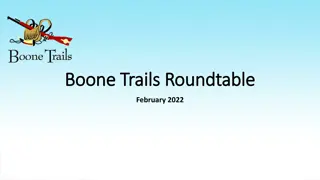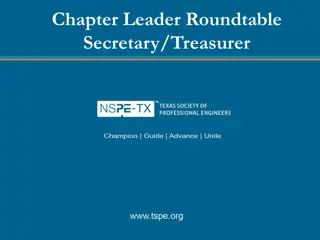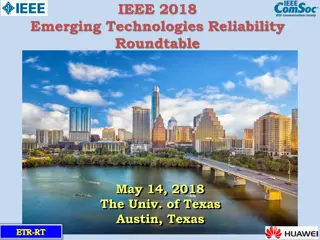New Skills in Statistics Education: Roundtable Reflections
In this discussion, experts reflect on the changing landscape of statistics education. Topics range from the use of real data in teaching to the impact of data science on curriculum. Tensions between traditional and modern approaches, as well as proposed curriculum redesign and new emphases, shed light on the evolving field of statistics education.
Download Presentation

Please find below an Image/Link to download the presentation.
The content on the website is provided AS IS for your information and personal use only. It may not be sold, licensed, or shared on other websites without obtaining consent from the author.If you encounter any issues during the download, it is possible that the publisher has removed the file from their server.
You are allowed to download the files provided on this website for personal or commercial use, subject to the condition that they are used lawfully. All files are the property of their respective owners.
The content on the website is provided AS IS for your information and personal use only. It may not be sold, licensed, or shared on other websites without obtaining consent from the author.
E N D
Presentation Transcript
New Skills in the Changing World of Statistics Education; July 6-12, 2020 IASE 2020 IASE 2020 Roundtable Roundtable: : Reflections Reflections Gail Burrill Michigan State University
Statistics in our world: What do you notice? Wonder? (Released by Georgia Department of Health in May, 2020)
New Skills in the Changing World of Statistics Education Topic 1: The use of real and meaningful data in teaching and learning statistics Topic 2: The emerging role of multivariate thinking in inferential reasoning* Topic 3: The influence of data science on the school curriculum and introductory statistics courses* Topic 4: Increasing power of technology and its use for doing statistics and for enhancing learning and understanding of key statistical concepts Topic 5: The changing nature of data visualization and implications for the curriculum Topic 6: Collaboration with other disciplines to enhance students statistical understanding Note the asterisks indicate these topics often arose in the discussion of the other topics.
Tension between status quo and new directions Tensions between traditional approach to inference based statistics and that based on analysis of large data sets; (Luebke). Need to revisit the PPDAC cycle (e.g., Frischemeier, et al.; Robles) New framework for data analytic skills - question then answer framework inadequate (Gonza lez, et al.) Concern that computer science community has different perspective than statistics departments- who is setting the agenda? Data science thinks more about predictions rather than as a truth out there and trying to establish how close we are to the truth (Von Bing Yap, discussion*) *Remarks occurred during discussion
Rethinking the curriculum Education for sustainable development systemic approach how things are joined together; how is this reflected in our thinking? (Andre) Using subsets of data and looking for stability (or not) of solutions is a big idea that is absent in conventional courses (Biehler, discussion*) Need for new courses: International Data Science In Schools Project (Sheldon) interdisciplinary approach implementing Data Science in secondary school considering the need for new skills in statistics education - Paderborn Project (Frischemeier, et al; Biehler, et al.) Redesign of secondary curriculum to include concepts from data, number, and statistics to meet need for informed consumers of data-based information (Burrill) New topics or emphases: decision trees (Biehler, et al.); coding (Wild), multivariate thinking (Andre); bias, nonresponse (Von Bing Yap); confounding
Data literacy- for whom- the audience Data generators, consumers, collectors, aggregators (Adeboye) Reader as navigator, interpreter, designer and interrogator involving data consumers and data producers (Bolch) Specialists and generalists (Wild) data literacy for all: integrating statistical literacy, quantitative thinking and data science (Burrill) Data literacy building decision trees; data science- automatically applying algorithm to analyze data (Biehler, discussion) Begin in elementary grades with introduction to data from their environment, develop concepts in middle school (Balkaya & Kurt)
Data- the big deal As motivator: compelling examples, engaging context, hot issues (Engel), giving students/teachers a choice along with a structure; student projects (Teran, Biehler, et al.; Chen) For program improvement (e.g., chat bot, Berens) What is meaningful data? For whom? (e.g., Chiesi, psychology tests for psychologists) Simulated data vs real data (Adeboye) Representations: Maps (Mocko), doughnuts (Andre); decision trees (Biehler, et al.; attention to cost analysis?) Sources: Local surveys; Infographics; Gapminder; Our World in Data, ProCivicStats, Financial Times, Population Pyramids, CoVid-19 graphics, Artic ice,
The role of technology Access: Democratising data by facilitating a broader spectrum of people able to do more with data. Minimize prior learning (Wild) Availability of computer technology, internet, etc. - examine possibility of mobile phones (Habibullah) Possibility of interactive dynamic handhelds with menu driven coding and tailor made apps (Burrill, discussion*) Opportunities: Promotes visualization- opens opportunities to make statistics accessible to people with different levels of skills and to broader range of the population (Engel) Supports broader thinking: How else can I do this? What else can I do? (Wild) Platforms: CODAP, R, Jypyter notebooks, Inzight and Inzight lite, Tableau, Tinkerplots, Handheld interactive dynamic handhelds, mobile phones,
Strategies for designing/implementing studies Delphi panels and epistemic framework using mental structures to process and understand visualizations* (Bolch) Building on understanding questioning** (Arnold & Pfannkuch, 2018)) and think pair share (Frischemeier, et al.) Use of sound to help students understand randomness* (Renelle, et al.) Training data and test data* confirm direction of thinking (Biehler, et al.), particularly important when working with large data sets * Something new; ** something old but effective
The challenge: A home for data literacy Crosses all disciplines but has no real home in the curricula of most countries Math teachers not really involved with context (Engel, discussion*); many other disciplines do not deal well with variability Some content areas more comfortable with collecting and analyzing data than others (Sharma) Language differences across disciplines (Sharma), care with words Inference in science is not the same as statistical inference; do students see the connection?
Moving forward What changes do we as statistics educators need to make to stay relevant? What research do we need to support moving in new and different directions? How can we take advantage of the opportunities provided by the emerging emphasis on data science to restructure what we do in statistics education? How can we support teachers in preparing for changes in what and how they teach to incorporate data literacy ? How can we make use of what other disciplines (e.g. computer science, computer science education, domain application areas, etc.) can contribute to statistics education?
References Arnold, P., & Pfannkuch, M. (2018). Critiquing investigative questions. In M. A. Sorto, A. White, & L. Guyot (Eds.), Looking back, looking forward. Proceedings of the Tenth International Conference on Teaching Statistics (ICOTS10, July, 2018), Kyoto, Japan. Voorburg, The Netherlands: International Statistical Institute. Papers presented at the IASE 2020 Roundtable: Adeboye, N. Big data affluence in statistics application: A comparison of real life and simulated open data Andre, M. Integrating Education for Sustainable Development in statistics classes: Visual analysis of social and economic data with Gapminder Balkaya, T. & Kurt, G. An investigation of statistical reasoning skills of middle school students about distribution. Berens, F. Learning analytics as a tool to permanently feedback lecturers and teaching assistants. Biehler, R., Fleischer, Y., Budde, L., Frischemeier, D., Gerstenberger, D., Podworny, S., & Schulte, C. Data science education in secondary schools: Teaching and learning decision trees with CODAP and Jupyter Notebooks as an example of integrating machine learning into statistics education.
Bolch, C. Data Scientists epistemic thinking for creating and interpreting visualizations and the impact for students data visualization literacy Burrill, G. Statistical literacy, quantitative reasoning, and data science: Rethinking the curriculum. Chen, M. Mixture DOE on video game physics Chiesi, F. Using psychological testing to make statistics understandable and meaningful: An exploratory study. Engel, J;. Visualizing multivariate sata: Graphs that tell stories. Budde, L., Frischemeier, D., Biehler, R., Fleischer, Y., Gerstenberger, D., Podworny, S., & Schulte, C. Data Science Education in secondary school: How to develop statistical reasoning when exploring data using CODAP and Jupyter Notebooks. Gonza lez, O., Isoda, M., & Araya, R. Statistical thinking for the era of big data and artificial intelligence: Toward understanding sustainability trends and issues for the future society Habibullah, S. Enabling statistics undergrads of developing countries to take their first steps toward data science through mobile applications. Luebke, K. Now is the time for causal inference in introductory statistics Mocko, M. Where is Waldo in statistic class? Using maps to explore modern data types. Renelle, A., Budgett, S., & Jones, R. New Zealand teachers perceptions when hearing waiting-time distributions Robles, B. 2SDR methodological strategy for teaching and learning statistics in Industrial Engineering students.
Sharma, S. Pre-Service teachers experiences of integrating statistical investigations in their curriculum areas. Sheldon, N. International Data Science in Schools Project. Teran, T. The project method as a motivator in non-statistical careers. Yap, Von Bing. Simulation-based exploration of surveys with non-response.
